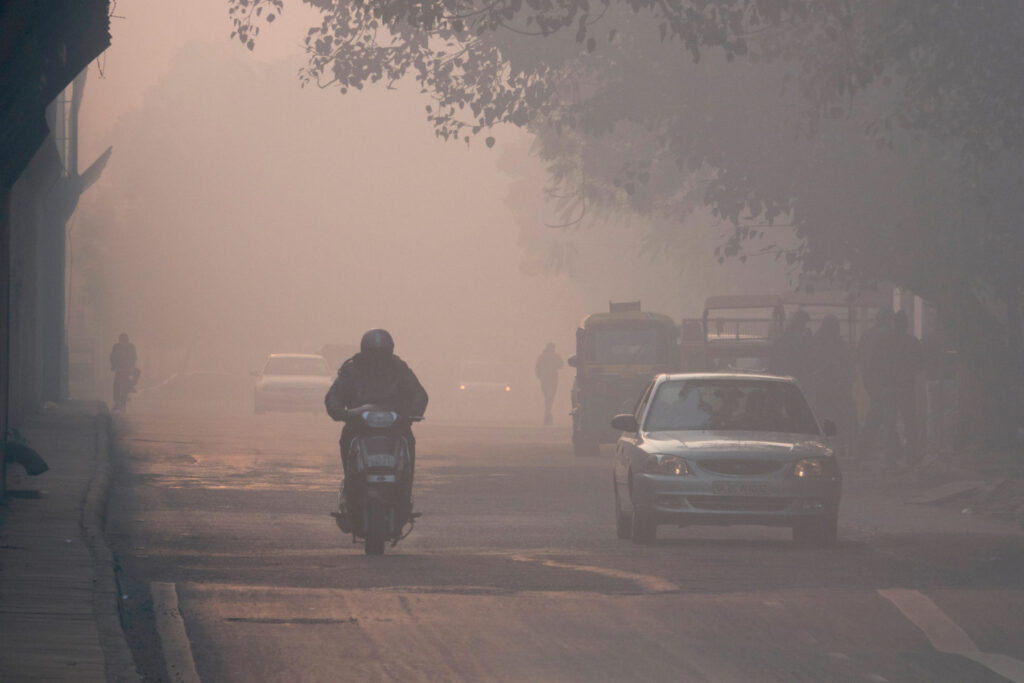India Home To 18 Of 20 Cities With Severe Rise In Air Pollution: Study
Aug 18, 2022 | Pratirodh Bureau
Commuters drive amidst hazardous levels of air pollution in New Delhi
India is home to 18 of the 20 cities with the most severe increase in fine particle pollutants (PM2.5) from 2010 to 2019, according to a comprehensive and detailed analysis of air pollution and global health effects for over 7,000 cities released on Wednesday.
The report published by the US-based research organisation Health Effects Institute (HEI) also shows that Delhi has the highest average level of fine PM 2.5 among the world’s most populated cities.
The analysis used data from 2010 to 2019 and focussed on two of the most harmful pollutants — fine particulate matter (PM2.5) and nitrogen dioxide (NO2).
The report ‘Air Quality and Health in Cities’ combined ground-based air quality data with satellites and models to produce air quality estimates for cities around the world.
The authors noted that in 2019, 1.7 million deaths linked to PM2.5 exposure occurred in the 7,239 cities included in the analysis, with cities in Asia, Africa, and Eastern and Central Europe seeing the greatest health impacts.
They zoomed in to the most populous cities in each region i.e. a subset of 103 cities across 21 regions. Among the most populous cities in each region, Delhi and Kolkata featured in the top 10 with the highest PM2.5-related disease burden in 2019.
In the 20 cities with highest PM2.5 exposures, residents in cities from India, Nigeria, Peru, and Bangladesh are exposed to PM2.5 levels that are several-fold higher than the global averages, the report said.
Only four of these cities, and none in India, met the WHO annual PM2.5 Air Quality Guideline of 5 microgrammes per cubic metre (g/m3) in 2019, it said.
India and Indonesia have seen the most severe increase in PM2.5 pollution, whereas China has seen the greatest improvements.
“Of 7,239 cities, India is home to 18 of the 20 cities with the most severe increase in PM2.5 pollution from 2010 to 2019. The other two cities are in Indonesia,” the authors of the study noted.
“Of the 50 cities with the most severe increase in PM2.5, 41 are in India and 9 are in Indonesia. On the other hand, of the 20 cities with the greatest decrease in PM2.5 pollution from 2010 to 2019, all are located in China,” they said.
The report found that while exposures to PM2.5 pollution tend to be higher in cities located in low- and middle-income countries, exposure to NO2 is high across cities in high-income as well as low- and middle-income countries.
“Since most cities around the world have no ground-based air quality monitoring in place, estimates of particulate and gas pollution levels can be used to plan air quality management approaches that ensure the air is clean and safe to breathe,” said Susan Anenberg of George Washington University, one of the project collaborators.
The report also highlights data gaps in low- and middle-income nations, a key aspect to understanding and addressing the health effects of air pollution.
According to the WHO’s Air Quality Database, only 117 nations currently have ground-level monitoring systems to track PM2.5, and only 74 nations are monitoring NO2 levels.
Breathing even low levels of pollution over time can produce a myriad of health effects, including reduced life expectancy, missed school and work, chronic illnesses, and even death, putting enormous strains on communities and economies around the world, the report said.
Worldwide, air pollution is responsible for one in nine deaths, accounting for 6.7 million deaths in 2019, with particularly strong impacts on the young, the elderly, and those with chronic respiratory and heart diseases, it said.
